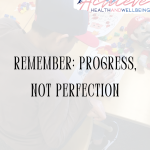Navigating Screen Time: A Guide for Parents to Encourage Healthy Habits
In our increasingly digital world, managing screen time for children has become a significant challenge for parents. The prevalence of smartphones, tablets, computers, and television can lead to excess screen time, negatively affecting children’s social, emotional, and physical health. As a parent, it’s crucial to navigate this landscape effectively, promoting healthy habits that support well-rounded development. Here, we’ll explore practical strategies to help parents establish healthy screen time limits and encourage beneficial alternatives.

Understanding the Impact of Excessive Screen Time
Current guidelines from the American Academy of Pediatrics (AAP) recommend that children aged 2 to 5 should have no more than one hour of high-quality programming each day, while children younger than 18 months should avoid screens altogether, except for video chatting (AAP, 2016). Excessive screen time has been linked to various negative outcomes, including:
- Physical Health Issues: Increased screen time correlates with a sedentary lifestyle, contributing to childhood obesity, sleep disturbances, and related health issues (Tremblay et al., 2011).
- Emotional and Behavioral Concerns: Research indicates that children who spend excessive time on screens may exhibit increased anxiety, depression, and behavioral issues due to reduced face-to-face interactions and playtime (Romer et al., 2013).
- Social Development Challenges: Without adequate in-person social interactions, children may struggle to develop essential social skills, leading to difficulties in forming relationships and resolving conflicts (Valkenburg & Peter, 2007).
Strategies for Limiting Screen Time
- Establish Clear Rules Together: Involve children in discussions about screen time limits. Setting clear and enforceable guidelines collaboratively can promote understanding and compliance. According to a report from the American Academy of Pediatrics, children are more likely to adhere to rules they helped create (AAP, 2016).
- Create a Family Media Plan: Develop a media plan that includes guidelines for screen time, types of acceptable content, and device-free times. The National Association for the Education of Young Children (NAEYC) provides helpful templates for families to create their own media plans together (NAEYC, 2018).
- Encourage Active Screen Time: When screens are used, encourage content that promotes learning, physical movement, and social interaction. Consider educational programs or apps that foster creativity and critical thinking rather than passive consumption.
- Introduce Screen-Free Days: Designate specific days for no screens. Use this time to engage in family activities—such as hiking, board games, or cooking together—that promote social bonding and physical activity.
- Model Healthy Habits: Children are keen observers and often mimic adult behavior. By demonstrating healthy media habits—like limiting your own screen time, prioritizing outdoor play, and engaging in meaningful conversations—you set a positive example to follow.
Promoting Healthy Habits Beyond Screen Time
- Encourage Outdoor Play: Consistently promote outdoor activities and unstructured play. Research shows that nature-based play enhances physical health, creativity, and emotional resilience (Louv, 2005). Aim for daily outdoor time, whether through organized sports, nature walks, or free play at a local park.
- Foster Emotional Literacy: Help children develop emotional intelligence by encouraging conversations about their feelings and experiences. Using books, storytelling, or role-playing can facilitate discussions around emotions, empathy, and conflict resolution.
- Prioritize Physical Activity: Aim for at least 60 minutes of physical activity each day, as recommended by the Centers for Disease Control and Prevention (CDC) (CDC, 2020). Introducing family exercise routines, dance sessions, or sports can make physical activity enjoyable and bonding.
- Incorporate Regular Routines: Establishing consistent daily routines—encompassing homework, screen time, family meals, and outdoor activities—helps provide structure and predictability, promoting overall emotional stability and health.
Conclusion
Navigating the complexities of screen time and instilling healthy habits in children can be challenging, yet it is vital for their social, emotional, and physical development. By setting clear guidelines, fostering positive habits, and encouraging alternatives to screen-based activity, parents can play an essential role in helping their children thrive in an increasingly digital world.
As we move forward in this technological age, cultivating a balanced approach to media consumption will empower children to establish healthy relationships with screens while encouraging meaningful connections with their peers and the world around them.
References:
- American Academy of Pediatrics (AAP). (2016). Media and Young Minds. Retrieved from AAP Website
- Centers for Disease Control and Prevention (CDC). (2020). Physical Activity Basics. Retrieved from CDC Website
- Louv 2005








